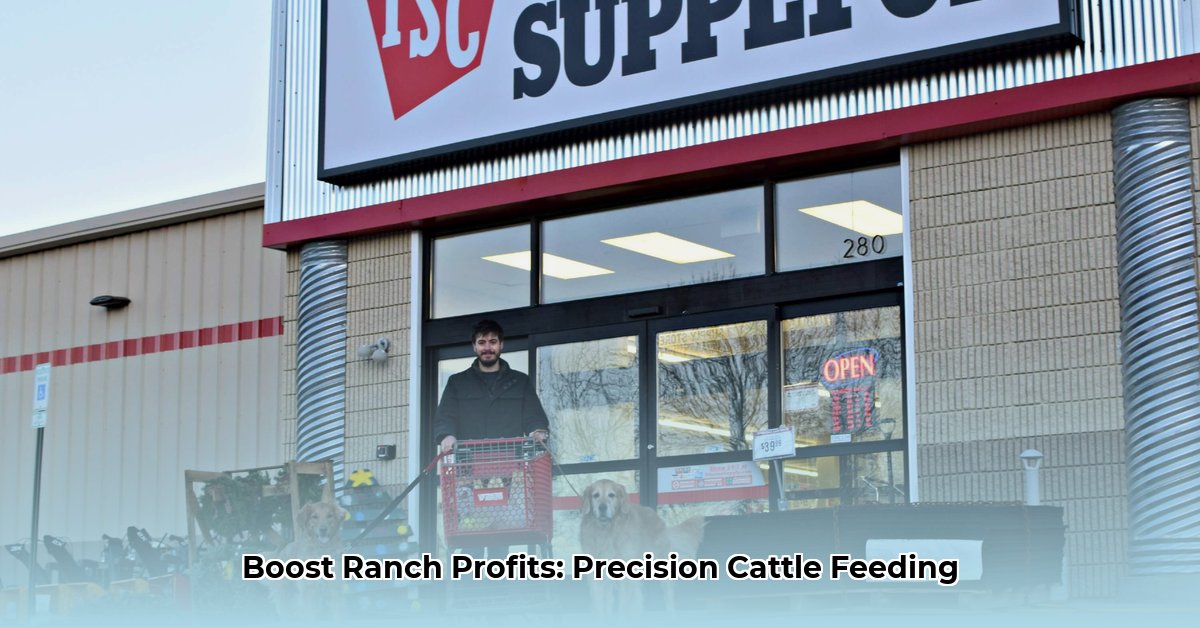
Precision feeding represents a significant advancement in cattle ranching, offering a pathway to enhanced efficiency and environmental sustainability. This data-driven approach moves beyond traditional blanket feeding strategies, tailoring rations to individual cow needs based on factors like age, breed, and physiological status. But how can ranchers effectively implement this transformative technology? This article provides a practical guide. For more information on sustainable feed options, check out this resource.
Understanding Precision Feeding for Sustainable Cattle Ranching
Traditional cattle feeding methods often lead to substantial feed waste and inconsistent animal performance. Precision feeding addresses these challenges by optimizing nutrient delivery, resulting in healthier herds, reduced costs, and a minimized environmental footprint. How does it work? It leverages data and technology to provide each cow with the precise nutrients she requires, maximizing growth and milk production while minimizing waste. Isn't it remarkable how this approach directly impacts both your bottom line and the planet's health?
Key Advantages of Precision Feeding
The benefits of precision feeding extend beyond simple cost savings. Consider these pivotal advantages:
- Improved Resource Efficiency: Reduced feed waste translates to lower operational costs and a smaller carbon footprint. This efficient use of resources leads to significant financial savings and a reduced environmental impact.
- Enhanced Animal Welfare: Optimal nutrition promotes animal health and reduces the incidence of disease, leading to happier, healthier cattle. Isn't it fascinating how providing the right nutrition directly translates to better animal welfare?
- Environmental Sustainability: Minimized feed waste and improved manure management reduce nutrient runoff and greenhouse gas emissions, contributing to a more sustainable agricultural practice.
Implementing a Precision Feeding System: A Step-by-Step Guide
Implementing precision feeding requires a well-defined, phased approach. Don't expect an overnight transformation; instead, approach this as a journey towards gradual improvement.
Step 1: Comprehensive Herd Assessment: Begin with a thorough evaluation of your herd's current health, nutritional status, and existing feeding infrastructure. Data collection is paramount; it forms the basis for all subsequent decisions. This initial assessment lays the groundwork for a successful precision feeding program. What information is most crucial to your initial assessment?
Step 2: Technology Selection: Numerous technologies support precision feeding, ranging from basic feed intake sensors to sophisticated AI-driven systems. Carefully evaluate your budget and operational needs before choosing a system. Start small; you can always scale up later as you gain experience and refine your strategies. What technological options are available and how do I choose the best one for my ranch?
Step 3: Pilot Program Implementation: Before committing your entire operation, start with a pilot program involving a subset of your herd. This allows for hands-on learning and system refinement before complete integration. A small-scale pilot program reduces the risk and allows for crucial adjustments based on real-world data.
Step 4: Continuous Monitoring and Adjustment: Data analysis is ongoing. Regularly monitor feed intake, animal performance, and environmental factors. Continuously refine your feeding strategies based on the gathered data. It is through this iterative process of adjustment that precision feeding truly realizes its potential. How frequently should I monitor and adjust my precision feeding system?
Addressing the Challenges of Precision Feeding
While the advantages are clear, some challenges must be addressed:
- High Initial Investment: Explore government grants, leasing options, and phased implementation to mitigate upfront costs. Consider the long-term return on investment to justify the initial financial commitment to precision feeding technology.
- Data Management Complexity: Utilize user-friendly software and seek assistance from agricultural technology specialists to manage data effectively. Proper data management is crucial for successful implementation and continuous improvement.
- Equipment Maintenance: Factor routine maintenance and potential repairs into your budget. Regular maintenance is critical to ensuring the ongoing performance of precision feeding equipment.
- Knowledge Acquisition: Invest in training for your staff or hire consultants to acquire the necessary knowledge and skills. The acquisition of appropriate expertise is critical to successful implementation.
“Precision feeding represents a paradigm shift in how we manage cattle operations. By embracing data-driven decisions and innovative technologies, we can not only enhance profitability but also contribute to a more sustainable agricultural system," says Dr. Emily Carter, Agricultural Scientist at the University of California, Davis.
The Future of Sustainable Cattle Ranching
Precision feeding is not merely a trend; it is the future of sustainable cattle ranching. By optimizing resource utilization and improving animal welfare, it paves the way for a more profitable and environmentally responsible industry. The transition may require effort and adaptation, but the long-term benefits for both the ranch and the planet are undeniable. Remember, it’s a journey of constant improvement and refinement.
How to Implement a Sustainable Feed Management System on Your Ranch